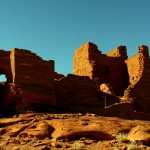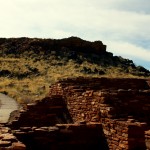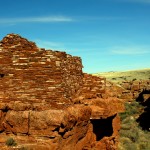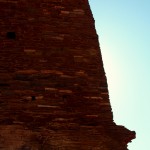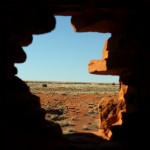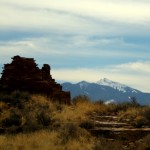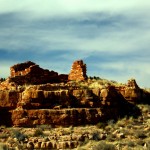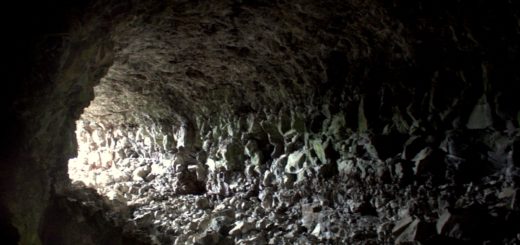Wupatki Ntnl Monument
The many settlement sites scattered throughout the monument were built by the Ancient Pueblo People, more specifically the Sinagua, Cohonina, and Kayenta Anasazi. Wupatki was first inhabited around 500 AD. A major population influx began soon after the eruption of Sunset Crater in the 11th century (between 1040–1100), which blanketed the area with volcanic ash; this improved agricultural productivity and the soil’s ability to retain water. By 1182, about 85 to 100 people lived at Wupatki Pueblo and by 1225, the site was permanently abandoned.
The Wupatki National Monument is just north of the Sunset Crater Volcano, and as it turns out, on the same road. So when you tour one, it is easier to simply tour the other at the same time. I broke it up into two days, camping a night in the Coconino National Forest that separates the two Monuments.
As I walked the trails that lead to each of the Pueblo’s I read up on the history of the people and the land thanks to the plaques scattered around the trails. The first thing that I noticed was the mention of ‘dry farming’ in which these people planted and grew crops in the desert, relying exclusively off rain water and runoff. They did not pipe in water from a source miles away, they simply built their community in locations that gave them the best amount of water runoff when it did rain, right on the banks of washes and canyons that would collect such water. If the rain did not come, it was a 10-mile walk to the nearest water source where they used pottery jugs to carry water back to their families.
Some of the structures, although 800+ years old, still appear to be inhabitable today with just minor work. As I walked through some, I wondered how well our modern structures would fare after 800 years of the desert beating down on them.
Ironically, that very question is answered in the harshest of ways by traveling right down the road when you enter the Navajo Nation. Many of the old structures there, built within the last 100 years, are in much worse shape than the Wupatki Pueblos. I fear that in another 1000 years archeologists of that time will more easily find the Wupatki structures than ones built in our own 21st century civilization.


